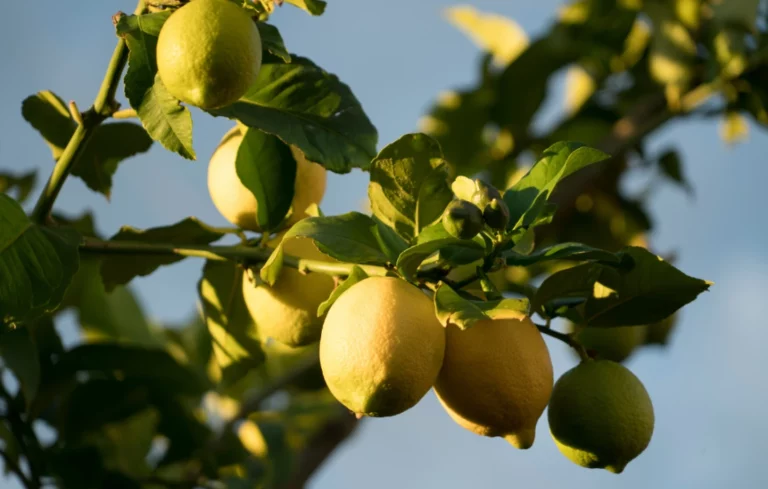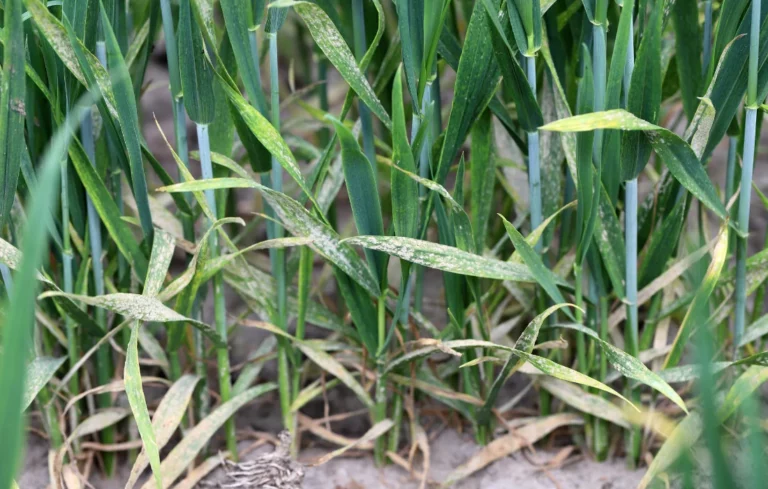Oats are a cereal crop vulnerable to numerous fungal and parasitic diseases. These pathogens can compromise emergence, reduce plant vigor, and directly affect harvest quality and quantity. The challenges for cereal growers are therefore major: maintaining yields while ensuring production meets industry requirements.
At Agrobiotop, a leading European player in agrobiology, we develop solutions to prevent and combat these diseases.
Crown rust on oats
Crown rust, caused by Puccinia coronata , is one of the most feared diseases of oats. It can also affect barley or rye.
Small orange to brown pustules appear mainly on the leaves. They can also develop on the sheaths, peduncles, awns, and panicles. These lesions are often accompanied by extensive chlorosis and necrotic areas that cause premature tissue death. At the end of the cycle, black pustules (telia) form on the already affected areas.
The infection severely disrupts photosynthesis, slows growth, and reduces grain production. Affected plants also become more susceptible to water stress.
The disease develops rapidly in warm weather, with temperatures between 20 and 25°C, and in the presence of high humidity.
Powdery mildew or white mold on oats
Powdery mildew, caused by Blumeria graminis f. sp. avenae , is common on oats in Europe and reappears almost every year.
The first signs appear as small, cottony white spots on both sides of the leaves. These spots spread and merge, resulting in a characteristic dense felting. Over time, this felting takes on a grayish or reddish-brown color. During sporulation, the appearance becomes powdery, easily visible to the naked eye.
Loose smut of oats
Loose smut, caused by Ustilago segetum var. avenae , is a disease that begins at germination. The fungus survives on contaminated seeds in the form of spores. Upon germination, it penetrates the young seedling and develops systemically.
At first glance, infected ears appear normal. But instead of grains, they produce a mass of powdery black spores , easily dispersed by the wind. This rapid spread contributes to the contamination of a new generation of seeds.
This disease causes direct and visible losses in yield by completely eliminating the grains formed.
Need a natural solution for oat disease?
Anthracnose of oats
Anthracnose is caused by Colletotrichum graminicola . Symptoms include:
- On young plants : wilting, dieback, sometimes mortality.
- On leaves : small, well-defined spots, circular, elliptical, or irregular in shape, reddish-brown in color. In the center, acervuli (small black dots) become visible. The infection progresses from the basal leaves upwards. The spots eventually group together, causing the leaves to dry out and fall prematurely.
- On ears : bleaching and partial sterility.
- On grains : shriveled appearance.
- On stems : whitening at the base, progressive browning and sometimes acervuli.
- On the collar : tissue rot, reduced tillering, increased sensitivity to lodging.
- On the whole plant : loss of vigor, faded color, advanced maturity.
The disease thrives more in sandy, poor, or poorly fertilized soils. Rainy periods increase the risk of infection.
Fusarium wilt of oats
Fusarium panicle blight is caused by several fungi of the genus Fusarium , including F. graminearum and F. avenaceum . Oats are less susceptible than wheat or barley, but remain exposed, especially during flowering in hot, stormy weather.
Symptoms :
- Partially bleached panicles, giving a “scalded” appearance.
- Possible presence of a light white-orange to pink felting on the glumes or grains when humidity is high.
- Discolored grains (beige, pink or purplish hues), with brown-black spots, often shriveled, poorly filled or partially rotten.
- On young seedlings: damping-off, germ rot, brown spots on aborted seedlings.
This disease can directly affect the health quality of the harvest by reducing the nutritional value of the grains.
Oat take-all
Take-all is caused by fungi of the genus Gaeumannomyces . Oats are resistant to several species by producing antifungal proteins (avenacins A and B). But Gaeumannomyces avenae circumvents this mechanism by producing an enzyme (avenacinase) that can neutralize this protection.
Symptoms :
- Early attacks: stunted, yellowing plants with reduced tillering.
- Severe attacks: early mortality, cessation of grain filling, incomplete maturation.
- Affected roots: xylem vessels colonized, preventing the absorption of water and nutrients.
- Possible bleaching of ears, especially in cases of water stress.
Oat ergot
Ergot , caused by the fungus Claviceps purpurea , affects many cereals such as wheat , barley, oats and especially rye . The disease manifests itself directly on the ears. The first signs appear in the form of drops of honeydew rich in conidia. They give way to a whitish mass , then to the formation of a purplish-black sclerotium which completely takes the place of the grain. This sclerotium, often prominent between the glumes, can protrude well beyond the ear. The presence of these structures leads to a direct loss of grains and also constitutes a health risk due to the toxic alkaloids they contain.
Cephalosporium leaf spot of wheat and oats
Cephalosporium leaf spot, caused by Hymenula cerealis , is a vascular disease affecting several cereals including wheat, barley, rye, triticale, and oats. It has not been reported in France, but is known in several European countries such as Germany, Italy, and Poland. Diseased plants have leaves marked by long yellow bands , sometimes accompanied by brown lines surrounded by yellow that can progress to the stem and sheath. Ears show bleaching, partial sterility, and premature maturation, which leads to the formation of shriveled grains.
The entire plant takes on a stunted appearance, with a burnt appearance and characteristic dark knots. These symptoms are often accentuated when the crop is under water stress.
Black hull of cereals
Black glume is caused by the bacterium Xanthomonas translucens pv. translucens . Its effects vary depending on the strain, growing conditions, and the affected variety.
Symptoms :
- Leaves : Water-soaked, yellow streaks in barley and triticale; necrotic streaks in the center with a rusty border in wheat. In humid conditions, the streaks elongate parallel to the veins. The bacterium produces a dark brown or translucent exudate that dries into thin deposits. The streaks sometimes coalesce into large lesions that are fatal to the leaf.
- Ears : black streaks between the vessels, starting from the tip of the glumes and glumes, gradually giving a black color. The grains become shriveled, brown, and light.
Mosaics of oats and wheat
Oat sterile dwarf virus (OSDV) is specific to Poaceae. It infects oats, wheat, barley, rye, and some forage grasses. The leafhopper Javesella pellucida is the main vector, capable of transmitting the virus throughout its life after contamination.
Symptoms :
- Entire plant : marked dwarfism, excessive tillering, absence of flowering, general appearance of a tuft of grass.
- Leaves : dark green coloration, deformations, small leaf growths (enations) on the dorsal surface.
Although not reported in France, this virus is being monitored in several Eastern and Northern European countries.
Agrobiotop solutions against oat diseases
Soil aeration
This action is very important because it plays a direct role in oat diseases.
Treatment for oat diseases (Physical barrier)
- CHITOPROTECT
- BENTOBIO (sodium bentonic clay)
In association with CHITOPROTECT :
- Cereal crops: 1kg BENTOBIO + 1 L of CHITOPROTECT /ha /100 L of water
- Market gardening: 3 kg BENTOBIO + 1.5 L of CHITOPROTECT / ha / 300 L of water
In association with PNPP : 1kg of BENTOBIO/100L of water increases the effectiveness of macerations (biostimulant)
Combination with Copper-based preparations : Dose of 1kg of BENTOBIO/100L of water
Bentobio dilutes perfectly in water and does not cause abrasion of pump systems.
The doses indicated should be adapted according to needs and objectives.
Dusting : From 8 to 15 kg/ha
Biostimulants against diseases
- YAKADOP (Recommended dose: 5 liters/100 liters of water/hectare)
- YAKAPRO (Recommended dose: 5 to 10 liters / 100 liters of water / hectare)
Seed coating
For protection against soil-borne fungal diseases.
Recommended dose for 100 kg of seeds, multiply the doses according to the volume of seeds
100 ml CHITOPROTECT + 900 ml YAKASEM /100 kg of seeds.
Biostimulants in action against pests
- YAKASELF (Recommended dose 10 liters/100 liters of water/hectare)
Do not hesitate to contact us for more information.





